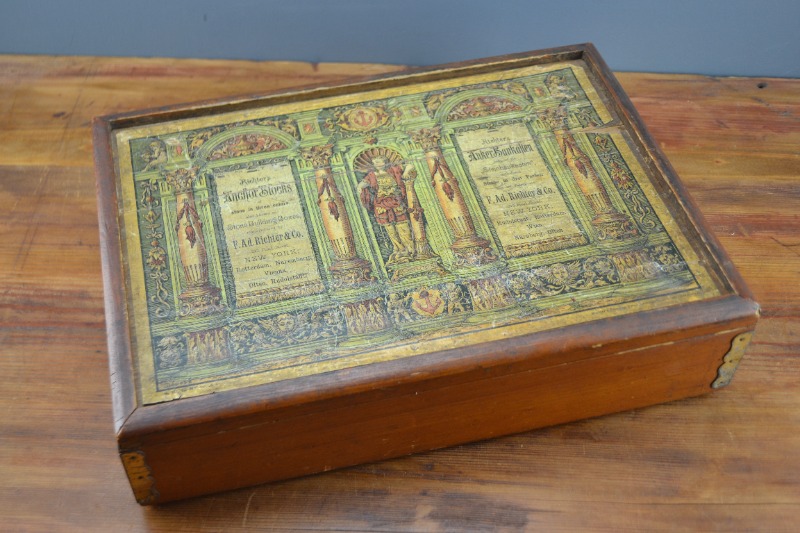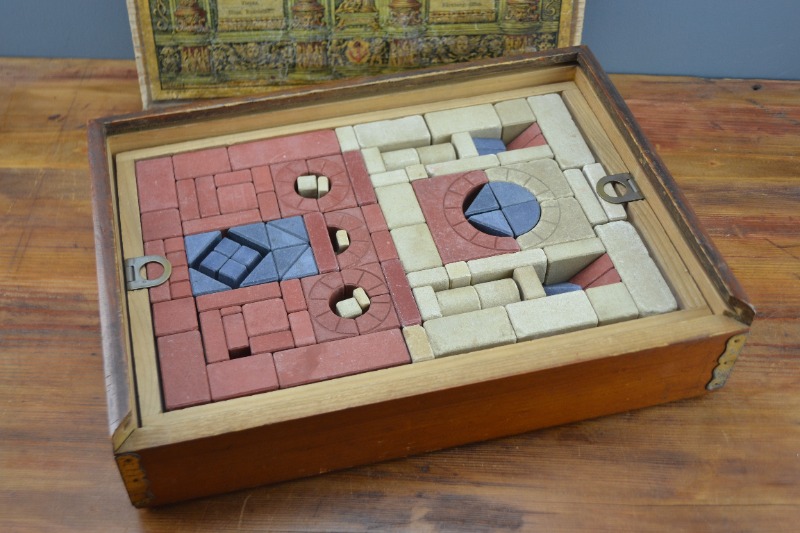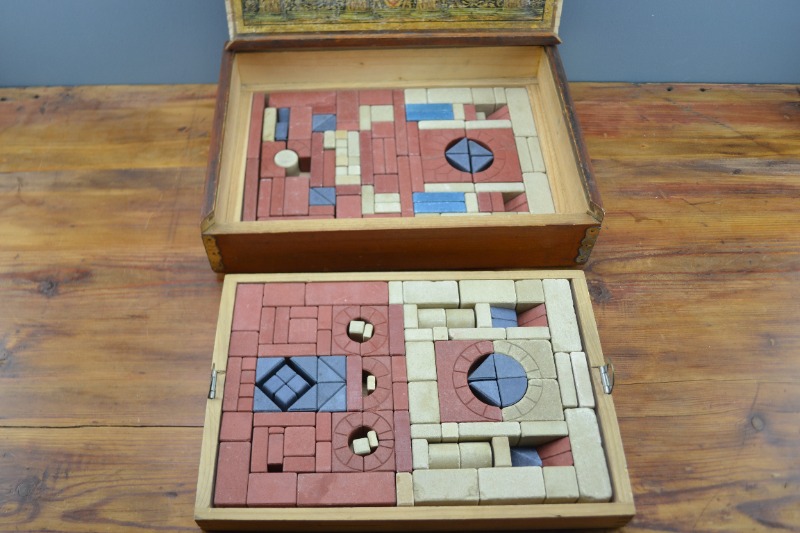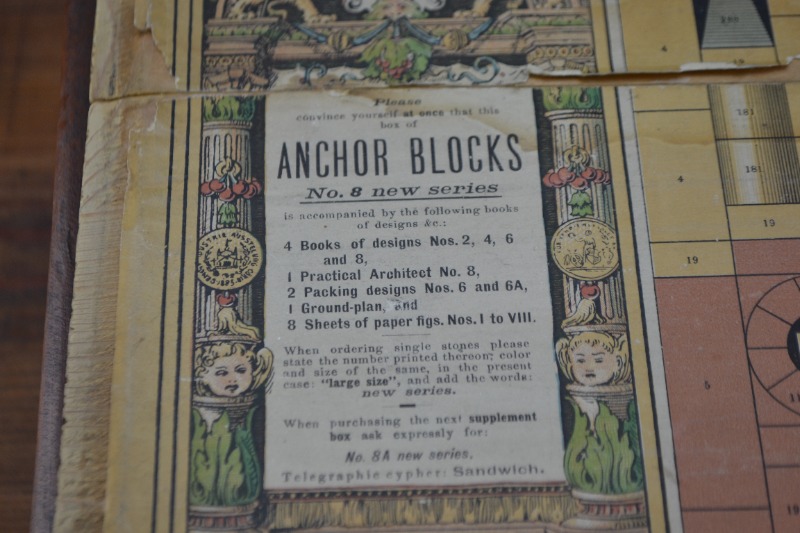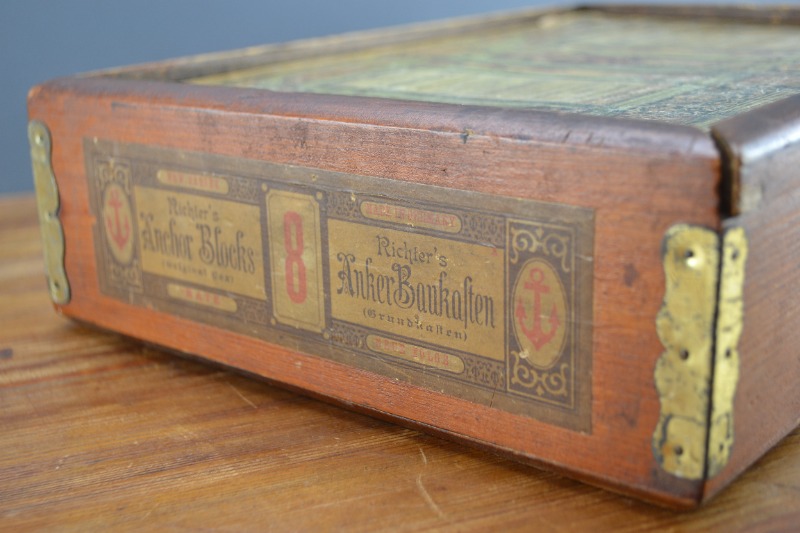Victorian Richter’s Anchor Architect Building Stones Set No. 8 New Series, 1898
Age:
1898
Material:
Dimensions:
Box: 36cm x 25.5cm x 9cm
Shipping:
Standard Parcel
Price:
SOLD
Victorian Richter‘s Anchor architect building stones set no. 8 (double layer). Date mark to box for England, August 1895.
A small number of stones appear to be missing and fours stones have historic repairs to them.
These building blocks were originally designed by the artist Gustav Lilienthal for the German educationalist Dr Georgen. With his brother, he invented an artificial stone made out of quartz sand, chalk and linseed oil, which were heavier and with a rougher surface so that they did not fall over so easily. Lacking in marketing skills, the brothers sold their idea to Friedrich Adolf Richter in 1880. Richter immediately expanded his factory complex in Rudolstadt and engaged famous artists, illustrators and architects to work on his project. In 1884 he offered a complete series of building stones for sale. He already had a publishing house in Leipzig producing educational material and used it to pursue a concerted advertising campaign. A label inside the box promotes a free catalogue. He entered his stones into numerous competitions and boasted in his 1885 catalogue 15 gold, 6 silver and three bronze medals. By spring 1886, his catalogue listed 175 unique stones in the larger 2.5 cm size und 63 smaller (2cm) stones. This catalogue was available in 13 languages. In 1895 he trademarked the design as "Richter‘s Anchor Stone Building Sets". The boxes of stones were designed to be accumulative. So, for instance, adding box No. 9A to No. 9 provided the same stones as the two-tier box No. 13.

